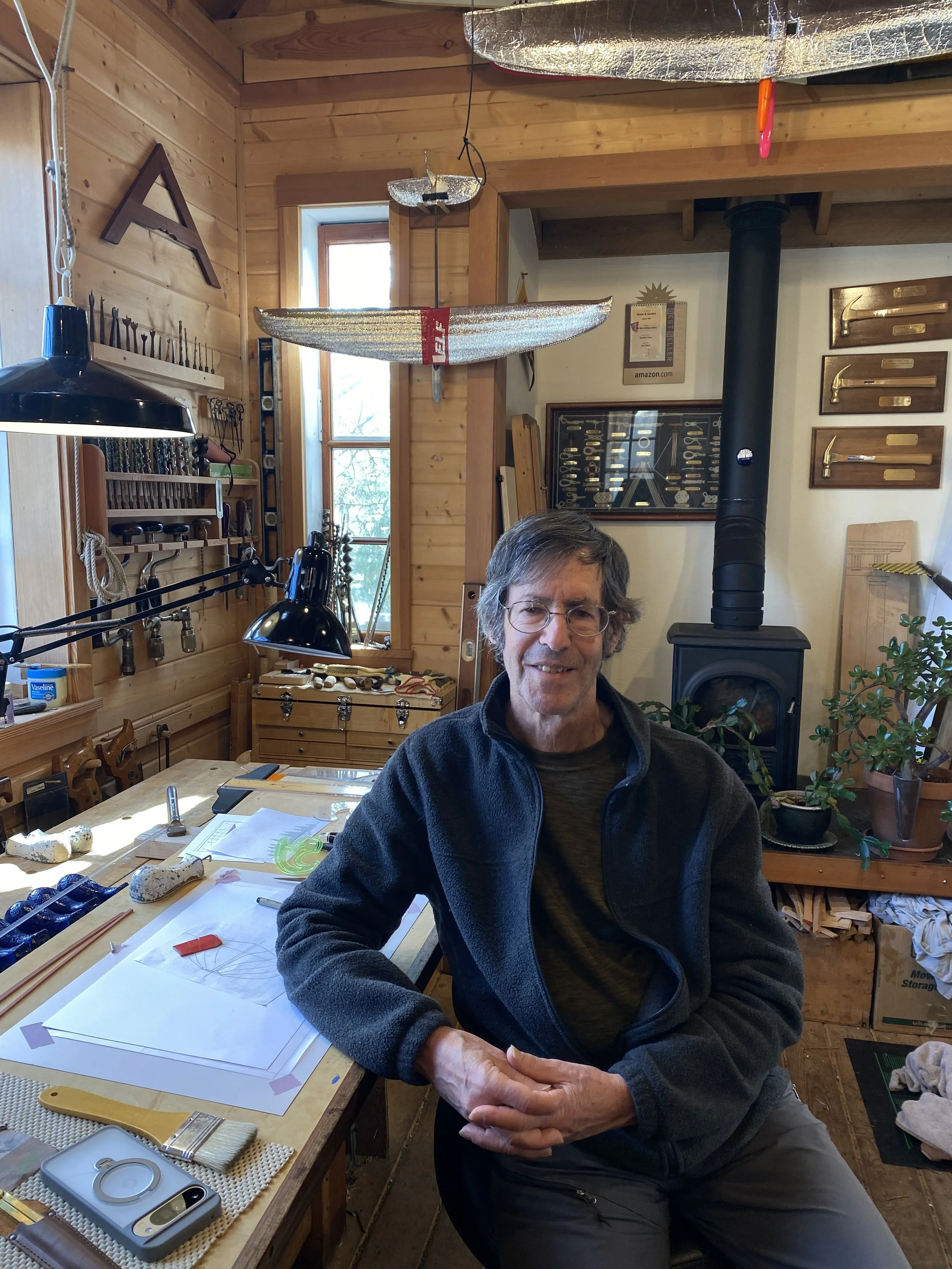Jim Tolpin
PTSW Co-Founder, Author, Woodworker
"Now, how did it ever happen that I wound up working wood for a living? Not just the occasional job, mind you, but for my entire working career. That wasn’t supposed to happen. I was just going to help my grad-school roommate install a cabinetmaking project that he was doing on the side. It was just going to be an intriguing, mid-term break from academia in the Fall of ‘69. But then I touched the wood, and it seems I’ve not been able to let go of it since.
"Over the next four decades I continued to chop, saw, shape and smooth the stuff. The biggest draw for me (and the people paying me to do it, obviously) wasn’t, of course, the wood itself but the things I built from it. Mostly it was custom cabinet work and high-end residential and commercial finish work that brought in the bacon over most of my career. But in between projects, filled with a young man’s passion, I eagerly explored many other other pathways in the world of woodworking.
"Over one fine summer in the early seventies, I experienced the truly ineffable joy of constructing a small, seaworthy skiff from a pile of pine boards. (Here I must thank Peter Culler for his “Good Little Skiff” design, and Bud McIntosh for telling me I could do it and then answering a barrage of questions over the ensuing months that probably made him think he was wrong about that). But the hull was done by that fall, and after I whittled out a pair of oars from spruce 2x6’s I rowed the little vessel out to a tiny uninhabited island off the coast of Maine and claimed it for my own (for that day at least). I thought I was pretty cool until I walked to the seaward side of the island and saw another young man sailing past the island, heading further down east under sail in a gorgeous Whitehall that he had built!
"By the next summer I was working with my friend Ken Kellman in the woods of Pennsylvania, chopping down young, straight- as-an-arrow, white oak trees. We were doing sustainable, selective cutting before it was pc I’ll have you know--and yes, we did the deed with an axe followed by a buck saw! (Admittedly, we are only talking here about a half-dozen trees over the course of that summer). Dave Sawyer drove down from Vermont in his old Model T pickup to show us how to work that wonderfully pliable and strong wood into an early American hayfork. (Which, by the way, actually works much better than its modern metal counterpart because of its inherent spring action--plus it costs nothing if you know how to make one!). We spent much of that summer splitting out wrist-sized cants from our harvested 4-ft. long bolts which we then shaped to a pattern with drawknives on a home-made shaving horse. After carefully splitting out the fork’s tines, we steamed them to a proper hay-fork curve over an open fire, rubbed a little pine pitch into the burn and then trundled them off to sell at Appalachian craft fairs.
"A few years later I was back in New England and again working with pine--but this time in massive cants that we (we being the crew of home-builder Frank Whittemore) hewed into the timbers of reproduction colonial homes and cottages. I learned to cut and fit the massive joints needed to tie the beams and posts together, drawing them home with tapered white oak pegs that we whittled to shape. Soon after moving to the Olympic Peninsula in the late seventies, I put these skills to work at Charles Landau’s Timbercraft Homes which was, amazingly, also building American colonial-style homes including a saltbox that we erected in downtown Tokyo. (But that’s another story!)
"Then my path through the woodworking woods took yet another turn after having set up shop in the old DeLeo building at the Boat Haven where I kept busy building cabinetwork and assorted boat furnishings such as skylights, boarding ladders and cuddy hatches. At the end of the summer of ‘83 a Hungarian gypsy pulled up to the shop with a rickety old sheepherder’s wagon in tow that he had found in the high desert of Idaho. “Can anybody here turn this thing into a gypsy caravan?” Well naturally I said “Of course!” having absolutely no idea how I would do such a thing. But after a particular long winter and spring, a caravan did indeed roll out of the shop and then across America behind the vehicle of one mysterious gypsy. Over the course of the next twenty years, another six Vardos (Romany for “living wagons”) rolled out of my shop--wandering time machines crafted of Olympic Peninsula cedar, spruce and fir (and Edensaw-sourced mahogany!).
"From boxes to boats, from pitchforks to pegs, and from cottages to caravans the last four decades have been, for me, all about making interesting things from wood. (See pictures of the Gypsy Wagon Jim finished in 2007.) But after recently turning to teaching the craft of woodworking--in particular the working of wood with hand tools--another and somewhat surprising path has opened before me. This time, though, its not in the realm of cabinetmaking, boatbuilding, timberframing, woodcrafts or wagonwrighting. The way has come full circle back to where I started: To the act of simply touching the wood. Now an ineffable joy arises as my hands push a sharp smoothing plane along a board’s face; or as they guide a chisel as it slices almost effortlessly across its end grain; or as I cradle a spokeshave in the palm of my hand to shape a curve along its edge. It seems to be enough now to simply work the wood. For I have come to realize that while the stuff I make is for the world, the making of it is for me. And I’m more than just fine with that!"
Jim Tolpin, 2011


